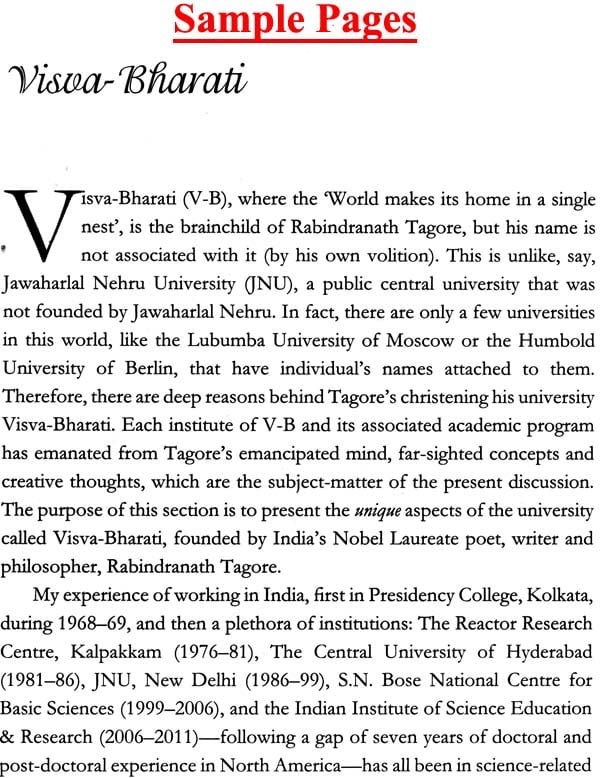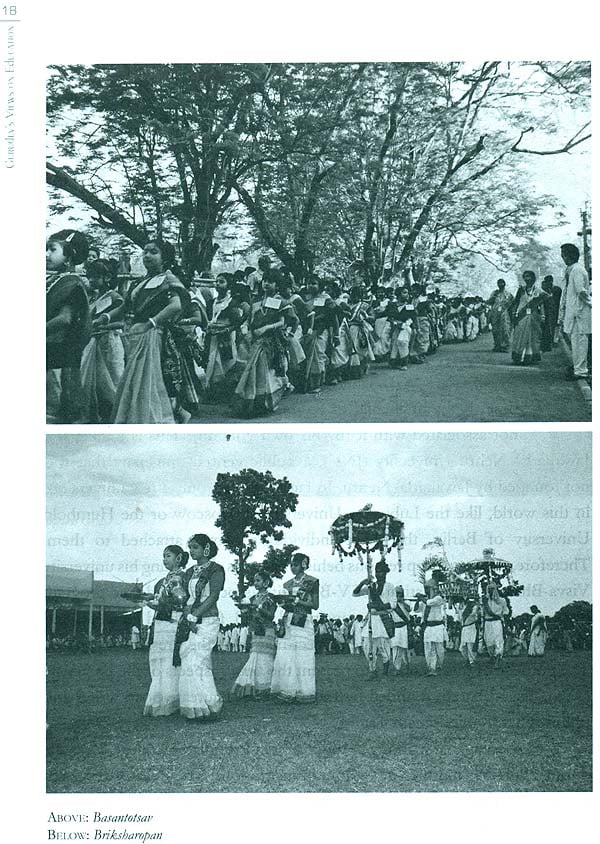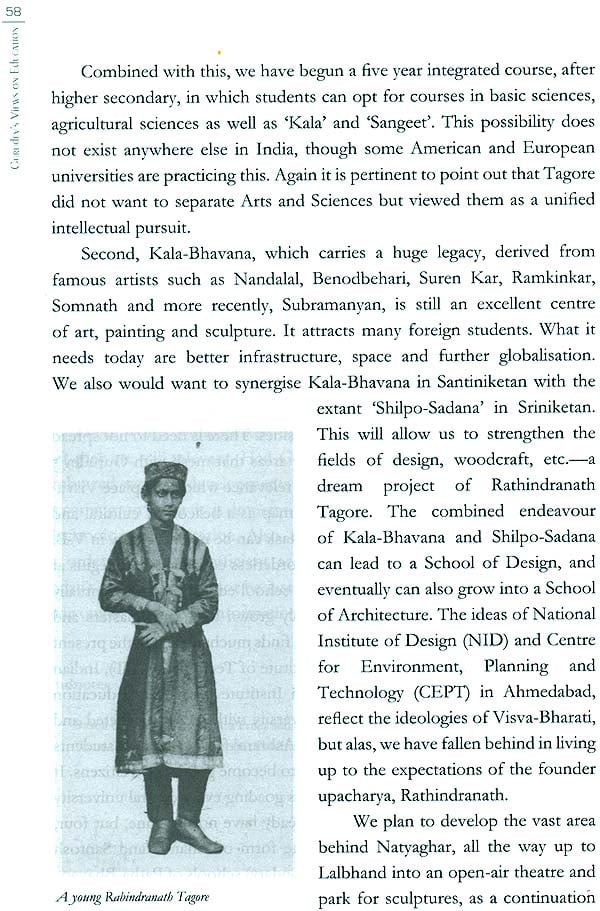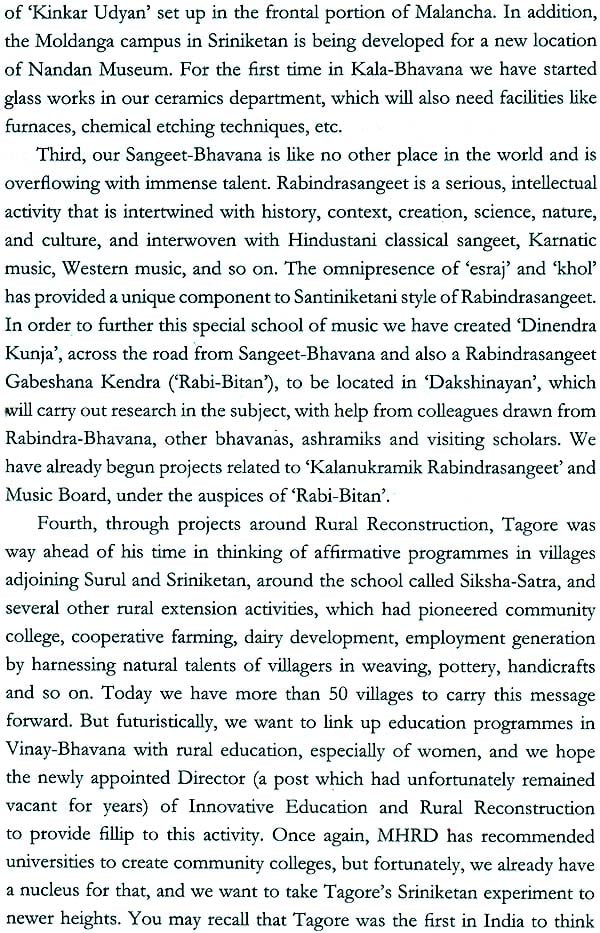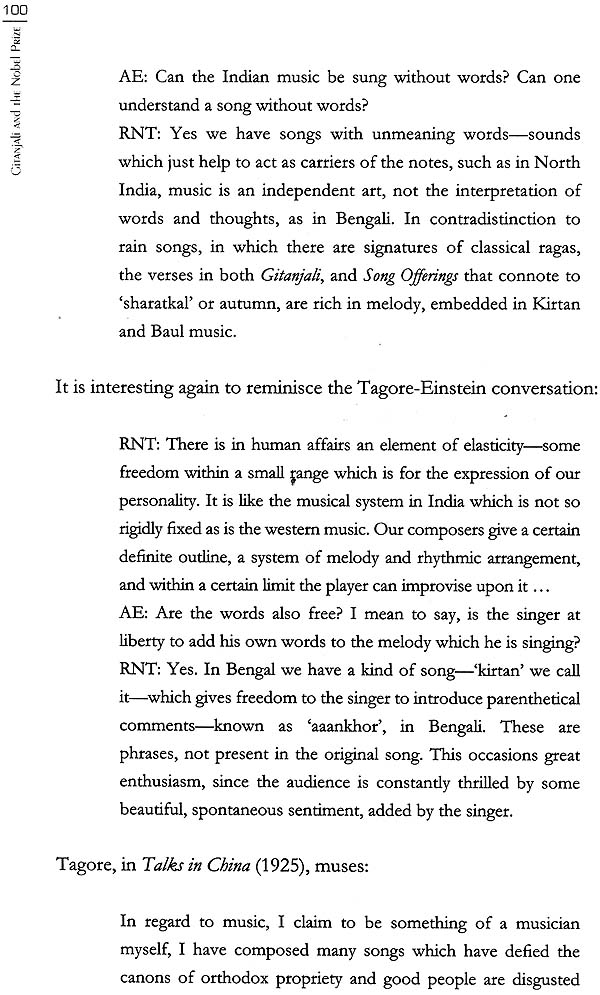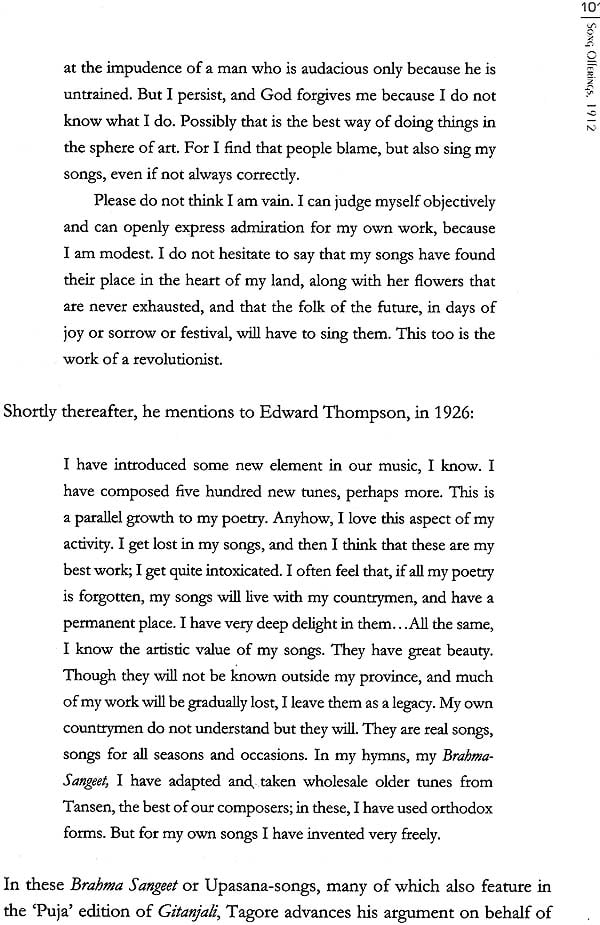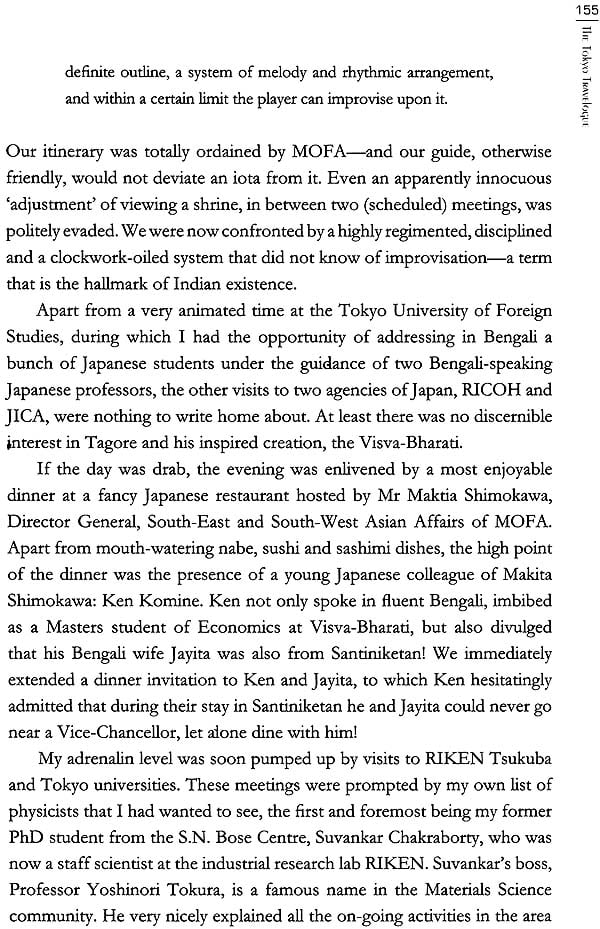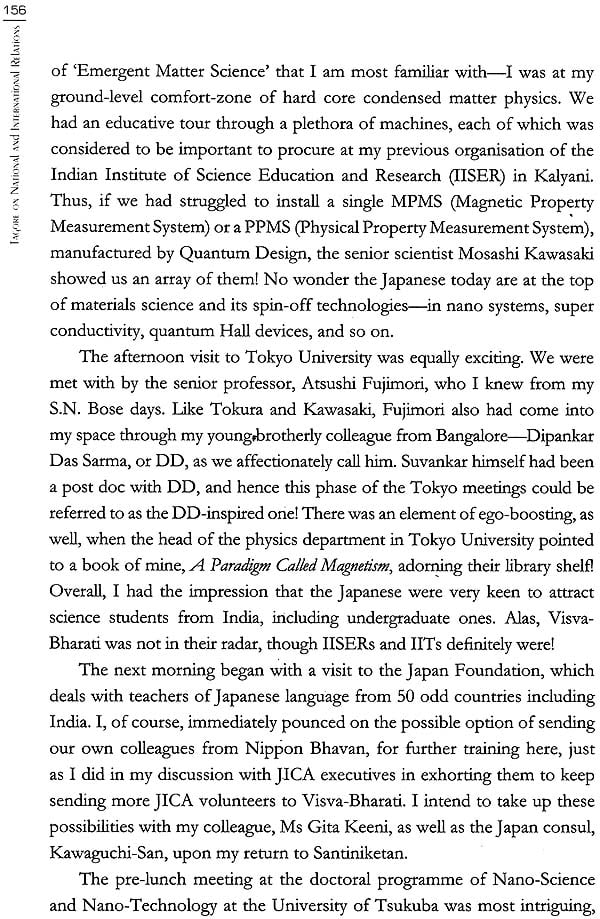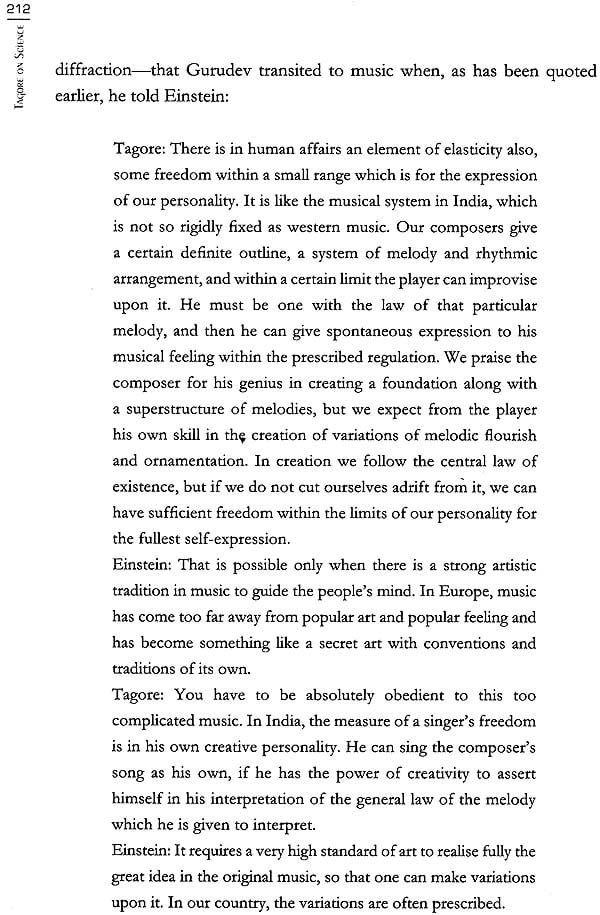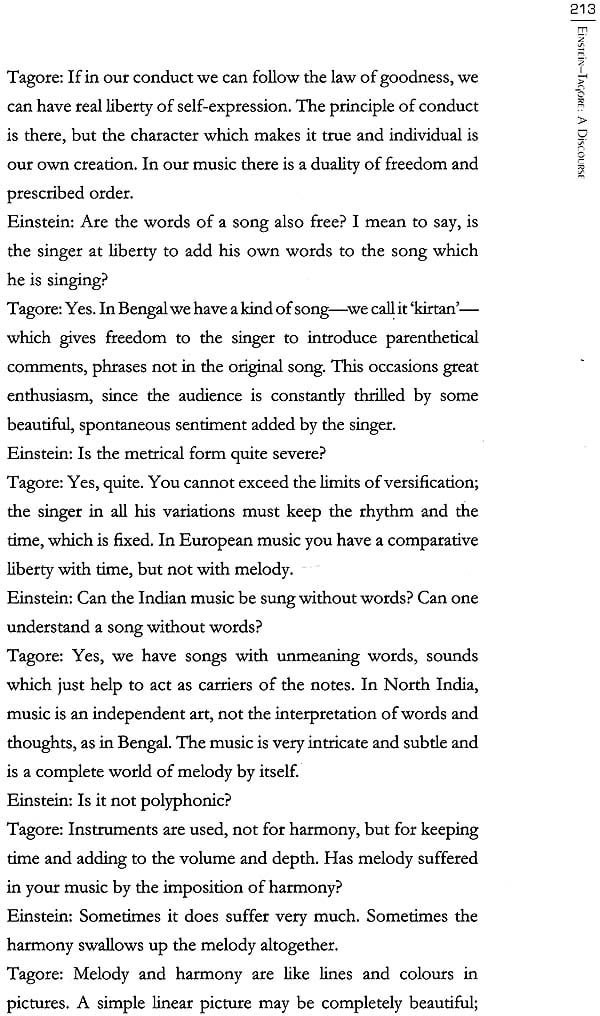
A Random Walk in Santiniketan Ashram
Book Specification
| Item Code: | NAN407 |
| Author: | Sushanta Dattagupta |
| Publisher: | Niyogi Books |
| Language: | English |
| Edition: | 2016 |
| ISBN: | 9789385285400 |
| Pages: | 219 (107 B/W Illustrations) |
| Cover: | Paperback |
| Other Details | 9.5 inch x 6.5 inch |
| Weight | 260 gm |
Book Description
A Random Walk in Sanitiniketan Asbram is spontaneous foray through one of India’s premier universities- Rabindranath Tagore’s Visva-Bharati. It is a collection of essays, penned from 2012-2014, during the first few years of the author’s tenure as its Vice Chancellor. It showcases the exclusive merits of this university, which is based on Rabindranath Tagore’s idea of what an ideal, education should constitute. But Visva-Bharati, today, lies shackled by the rules that govern all other institutes of higher education. Has Visva-Bharati ceased to be the Ashram it was envisaged to be? The book raises and explores this important and urgent question.
Sushanta Dattagupta, ex-Vice-Chancellor of Visva-Bharati, is a physicist, known internationally for his research in areas of Diffusion, Magnetism, Relaxation and Dissipation, on which he has written more than 150 papers and four authoritative books. He has also published a book in Bengali, Je Path Diye, on his experience in Visva-Bharati. Dattagupta has been an institution builder and served as the Dean of Physical Sciences, J.N.U; Director of S.N. Bose National Centre for Basic Sciences; and Founder Director of the Indian Institute of Science Education and Research (Kolkata). He is a Fellow (and has been Vice President) of all major Indian Science Academies and the World Academy of Science, Trieste. His other recognitions include Young Scientist and C.V. Raman medals of Indian National Science Academy, Meghnad Saha Lecture of National Academy of Sciences, C.V. Raman Birth Centenary Award of Science Congress and ‘Sera Bangali’ award from Ananda Bazar.
s a professional physicist, I have worked in various colleges, institutions and universities, both in India and abroad. After a span of more than thirty-five years of service in different places in India, I came to Visva-Bharati (V-B), a truly unique university set up by Rabindranath Tagore. This experience, over the last four years or so, opened my eyes to aspects of education which, in its holistic and all- encompassing form, led me to think deeply about the meaning of education itself. These thoughts were reinforced by just the previous experience of leading a new experiment of integrated science education in India as the founding director of one of the two Indian Institutes of Science Education and Research that were set up in the year 2006. It is with this background that I embarked on the task of writing this monograph, which portrays in a positive manner the values and ideals that were enshrined in the mind of India's greatest thinker, Gurudev Tagore, more than one hundred and fifteen years ago. At the same time the book also contains a chapter on a critical analysis of how these values are getting increasingly eroded in the present rush for career oriented and straight jacketed education.
The monograph is a reflection on various Tagore-related topics, some of which are re-written versions of lectures I have given in different forums, including V-B, or translations from .13engali writings that had been co-authored with Dr Indrani Mukhopadhyay. I am much indebted to her and Dr N. Mukunda and Dr Sitansu Roy for their invaluable advice and suggestions.
This book starts with a personal account of where I see myself vis-a-vis Rabindranath Tagore today, especially after my appointment in this elite institution as its Vice Chancellor in the year (2011) when I experienced a tremendous transformation within me. It goes on to describe how I feel about Tagore's Visva-Bharati after a long stint in scientific institutions and science departments of universities. My other reflections include an analysis of Tagore as an institution-builder, a hitherto less-discussed topic that raises the important question of how contextual the values embedded in the founding father's vision are-especially today when many of the material objects and practices, prevalent in Tagore's days, have disappeared from our lives altogether. Since Rabindranath's views on education were anchored on Upanishadic thoughts that hinged on the interaction of man and nature, the difficult issue of how to interface a contemporary university with an idea and an ideal, fast disappearing under the onslaught of modern times, has also been explored.
This book also focuses on Tagore's Magnum Opus-GitaJali: Song Offerings that fetched him Asia's first Nobel Prize. Several poems of Gitanjali, translated into English by Tagore himself, appear in Song Offerings and are sung in the form of ‘Rabindrasangeet'. This book chronicles some of those songs, which were composed and published elsewhere, but which can be interpreted to reflect the seasonal changes of Birbhum. The effort to translate GitanJali was not a premeditated attempt to cater to the English audience but a spontaneous wish to reach out to a wider readership. It is no wonder then that GitanJali had since been translated into many non-English languages and the Nobel Prize to Tagore had instilled an Asian identity and self-belief.
It is well-known that Rabindranath was acutely uncomfortable with nationalistic sentiments, articulated by Gandhiji and his followers. Tagore's concept of humanity transcended national boundaries and into domains that are not restricted by country-specific priorities. Inevitably, numerous national and international personalities were drawn towards Tagore, who had occasions to interact with them on a range of issues: Indian identity, the freedom movement, education, East-West confluence, art and music.
A limited sample of these famous encounters finds places in this book, too. Rabindranath was primarily a poet and a philosopher, yet he had abiding interest in science from childhood. A tangibly powerful expression of that interest is the book called Visva Paricbay (An introduction to the Universe) that he penned during the years 1934-37. Indeed, much of his focus on Visva-Bharati in the post-1920 years was on agricultural sciences, application of statistics, co- operative and mechanised farming, etc. Tagore perceived science not as a distinct intellectual pursuit from philosophy but as a unified holistic approach to unravel the beauty of creation. Inevitably, most of his creative thoughts on science are reflected in his music and shaped by his proximity to great scientists like Jagadish Chandra Bose-a close personal friend-and Albert Einstein. These aspects, namely the intersection of Rabindrasangeet with science, and a critical analysis of Tagore's meetings with Einstein, which have not been discussed earlier, are included in this book, hopefully without any prejudice.
I grew up in a family not overly or overtly religious. My father, though not an atheist, hardly ever visited a temple. Worshipping, for him, was a private matter. So much so that he was opposed to the socio-religious event of Durga Puja, the biggest among the Bengalis, where the whole community got involved in this fanfare. He was equally against the growing cult of following religious gurus, babas, maharajas and swamis, who, he felt, often misled people and misused vulnerability in the name of religion. My mother, too, educated beyond the norm of the day while being deeply entrenched in the philosophy of Ramakrishna Paramahansa, remained equally averse to religiosity. In my youth I was further exposed to a turbulently questioning Bengal, torn by refugee influxes across its border, and steeped into progressive thinking that eventually led to a full-blown communist movement. As the years went by, my natural inclination led me to dedicate myself to the cause of scientific research, with no time for spirituality at all. After returning to India following a doctoral and two post-doctoral stints in North America for nearly seven years, I got intensely involved with teaching physics, researching and institution-building. My motto in life became: 'Work is Worship'.
It was against in this-backdrop that, at the ripe age of nearly sixty-four, I entered the portals of a heritage university of India, called Visva-Bharati, as its Chief Executive or Vice Chancellor. This university, located in Santiniketan ('Abode of Peace'), 160 km north-west of Kolkata, was founded by the poet, philosopher and writer, Rabindranath Tagore, who went on to win Asia's first obel Prize in the year 1913.
Shortly after moving to Santiniketan in the year 1901, Tagore lost his wife and two children and resorted to living life of an ascetic in deep reflection. By then he had reached the midpoint of his life. He had turned spiritual, and had initiated a unique model of education that incorporated open-air classes through which he could help young children imbibe rudimentary scientific ideas as well as singing, dancing, painting and sculpting. The idea was to create an environment of holistic learning-an all-encompassing education combining Eastern Upanishadic thoughts with Western scientific temperament.
My exposure to Tagore had hitherto been limited to occasional indulgences in singing and listening to Rabindrasangeet-songs written and composed by Tagore. I had rarely delved into the lyrics or strived to comprehend the deep underlying meaning of the words when I was young. But gradually it dawned on me how every written word-be it on love, nature, history, science or philosophy-was infused with deep introspection.
Tagore had several admirers whom he deeply liked and loved, and drew creative inspiration from, so the term 'love' appeared strongly in all Tagore's works, throughout his life. One interesting musing on this subject, narrated in 'Paschim Yatri-r Diary', aboard the ship 'Krakovia', on 13 February 1925, translated from Bengali, reads:
There are two words in Bengali to express 'prem'-emotional
bonding: 'bhalolaga'-Self-driven adoration and 'bhalobasa'-
Love. These two words symbolise two posts across the sea
of emotion. When ego is involved, the expressive phrase is
'bhalolaga', but when others are involved, it is 'bhalobasa'. In
adoration there is self-satiation, whereas in loving there is self-sacrifice.
The 'baul' songs of the Poet were an extension of this expression into mysticism, Sufi philosophy and detached love. It was a fascinating experience for me to find pieces of Rabindrasangeet that fitted to every mood and nuance of my existence. I was transfixed to the universal love that Tagore's songs exuded.
The other startling revelation was the connection between science, creation and Rabindrasangeet. It was apparent that the Bard was in tune with Quantum Theory, which addresses the notion of 'reality' in both its particle and wave senses. Tagore had even asked the great physicist Einstein: 'How do you know that the Moon is beautiful unless you observe it?', thus underscoring the omnipresence of the 'Observer' in what is being 'Observed'-an essential aspect of quantum mechanics. The concept of symmetry and symmetry-breaking, ensconced in the recently discovered Higgs Boson (popularly called the God Particle), is also a recurring theme in Tagore's songs. Tagore viewed life and death as two complementary phenomena located diametrically opposite on a cosmic wheel, just like day and night, happiness and grief, white and black, and so on. For me, personally, it was an entirely new way of visualising my own being.
Was Tagore religious? Not at all in the ritualistic sense; he saw imprints of the Creator in the splendour of nature-in the cosmos, trees, fields, animals, and above all, in human beings. When you participate in the weekly Wednesday prayers or in the slew of events like 'Briksharopan' (Tree-planting), 'Halakarshan' (ploughing), 'Shilpotsav' (Craft Festival), 'Basantotsav' (Spring Festival), which take place at V-B, you experience contact with the Creator through the worship of Nature.
Today, I find myself standing at the crossroads of Science and Theology. While as a scientist I find explanations for the way every limb of the human body functions, and how the heart is a nonlinear electro-mechanical system that sends signals to the brain and regulates the viscosity of blood flow through arteries, I have no understanding of how the mind works. Are mind, emotion, and love not like quantum objects that can co-exist in simultaneous 'superposed' states that are 'entangled'?
Tagore's metaphor of a flower comes to mind. The existence of a flower, from the time a seed is planted, its nourishment through the soil, growth of the plant, formation of the bud ... to its eventual blossoming, is a scientific phenomenon. But the perception of the flower and an appreciation of its beauty, based on its colour, shape, size, fragrance, is entirely in our mind, for which science does not seem to have a clue. This inexplicable connection with the Creator understood and explained through Rabindrasangeet has caused a remarkable transformation in my life. Tagore, through his songs, has become my messenger of this universal love, my counsellor, and my healer.
| Preface | 7 |
| Introduction | 11 |
| Gurudev's Views on Education | 15 |
| Visva-Bharati | 17 |
| Tagore-the Educationist and Institution Builder | 21 |
| Visva-Bharati in the Contemporary World | 31 |
| Man and Nature | 47 |
| Responsibility of a Library | 53 |
| Power of Convergence | 57 |
| Ashram-Vidyalaya and a Modern University | 63 |
| Gitanjali and the Nobel Prize | 81 |
| Santiniketan Seasons through Gitanjali | 83 |
| Song Offerings, 1912 | 91 |
| Tagore Across Cultures: The Nobel Prize and Beyond | 105 |
